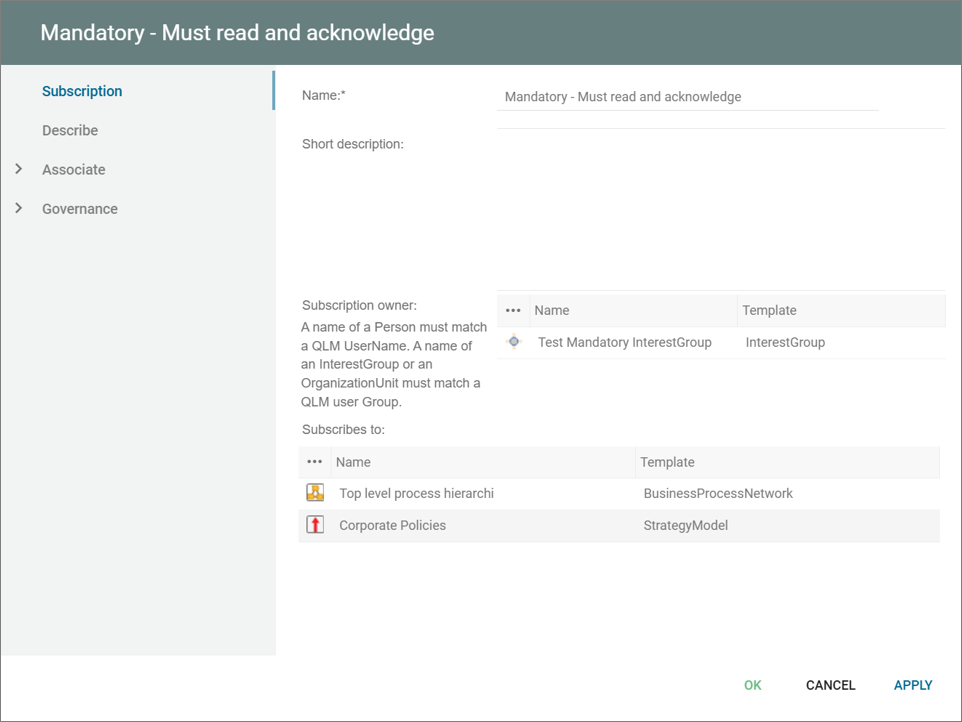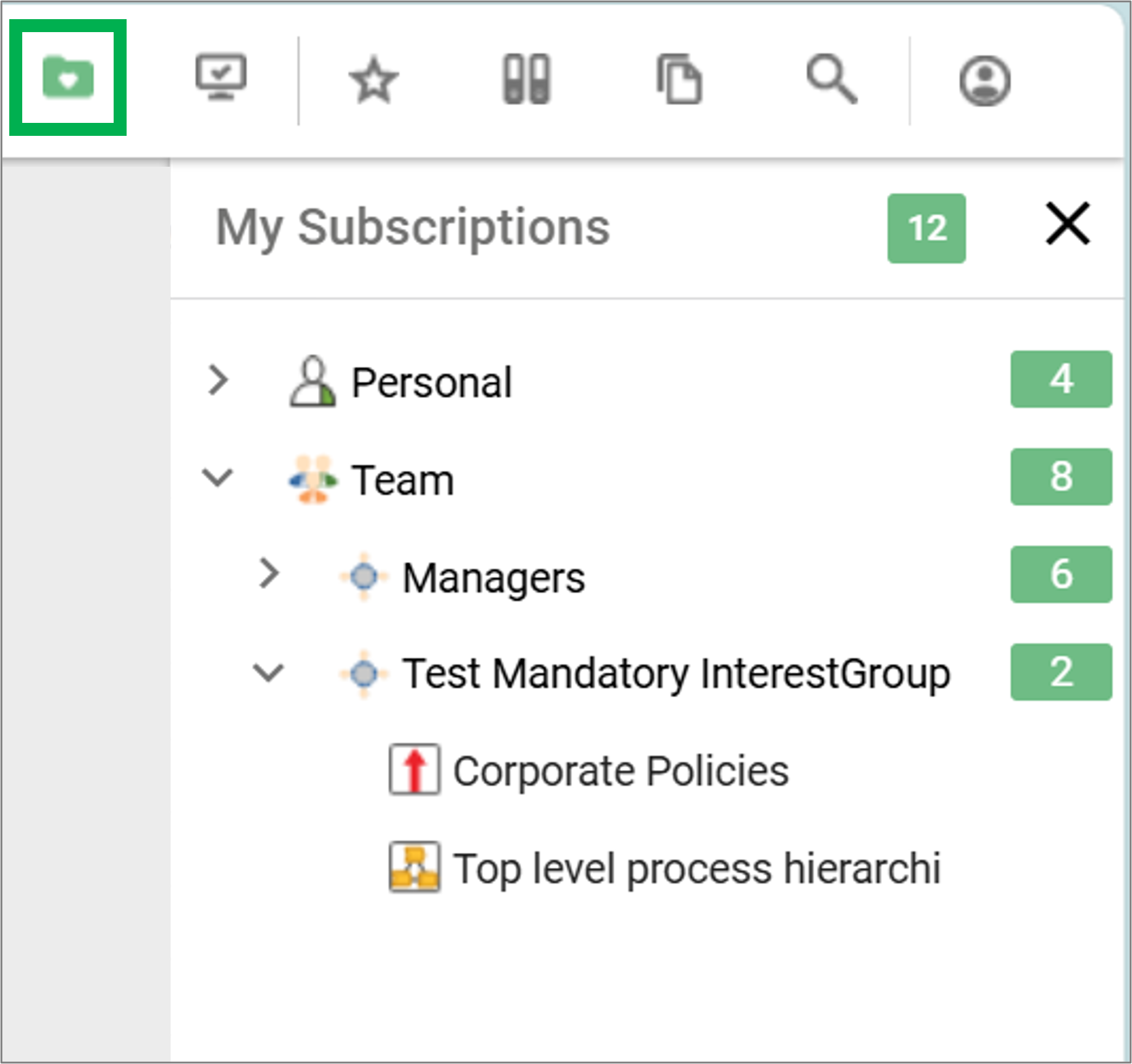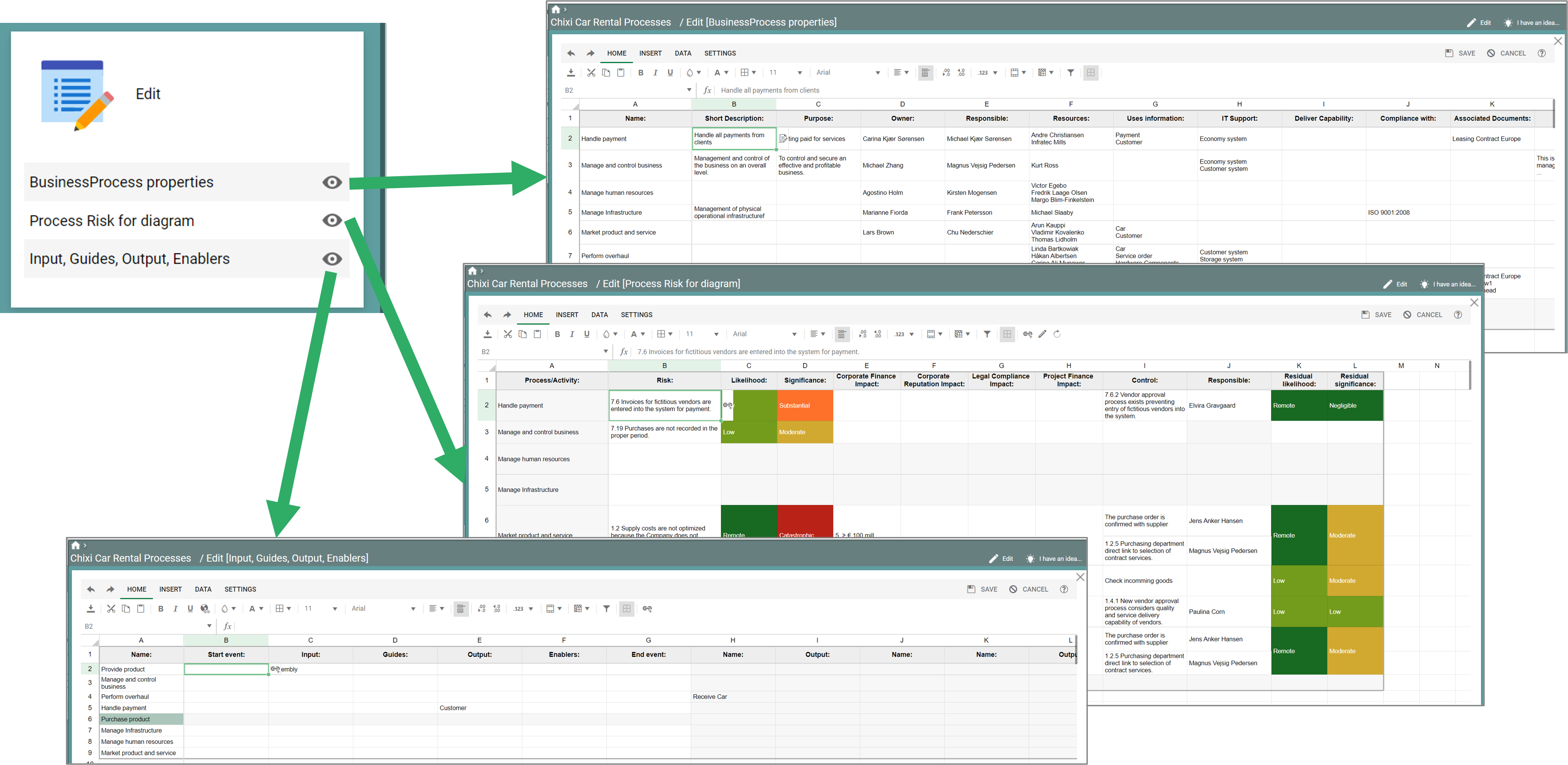Description of this template will be available soon.
Archives: Templates
Templates and model types in the QualiWare platform.
Subscription
The subscription template is used to collect users subscriptions.
Users can subscribe (and unsubsribe) to specific content.

A subscription object is automatically created in the repository, when a user subscribes to some content.
As standard the “Subscribe” actionbuttom is part of the change management governanceworkflow for approved content (this can be configured).
In additon to personal subscriptions it is possible to create additional subscription, e.g. to manage and control “mandatory” subscriptions on an organizational level. These subscription is mandatory, and the user cannot unsubscribe to the content.

The subscription – Personal and Team – can be found in the toolbar in the top right on the collaboration platform.

Subject Area Hierarchy Top
Description of this template will be available soon.
Structured Activity Node
Groups a set of actions into a structured block, like a sub-process or loop.
Strategic Alignment
The template is used to model a connection from a strategic object to another object on a diagram, e.g. from a goal to a process.
Stereotype
A Stereotype is a template in a Class Diagram that serves as an extension mechanism for adding domain-specific or custom semantics to model elements. Stereotypes allow you to classify or categorize elements in the model according to specific roles, characteristics, or behaviors relevant to your domain or context. They are typically used in combination with profiles, which define a collection of stereotypes, tagged values, and constraints tailored for a specific domain or application.
Example: In a Class Diagram for a system that manages an e-commerce platform, you might create a profile called “ECommerceDomain” that includes stereotypes such as “Product”, “Customer”, “Order”, and “PaymentMethod”. You can then apply these stereotypes to the corresponding classes in your model to provide domain-specific context and semantics. For instance, you could apply the “Product” stereotype to a class called “Item” to indicate that the class represents a product in the e-commerce domain. This additional context helps clarify the role and purpose of the “Item” class in your system.
State Activity
Description of this template will be available soon.
Standard Operating Procedure
Description of this template will be available soon.
Stakeholder
The stakeholder symbol represents an individual or group who has an interest or concern in the project or initiative. The symbol is usually positioned within a larger diagram or model that represents the project or initiative and its various components, such as its goals, objectives, scope, risks, and deliverables. The position of the stakeholder symbol within the diagram reflects the level of interest, influence, or impact that the stakeholder has on the project or initiative.
Spreadsheet
The Spreadsheet template allows you to easily to review, edit and aggregate collections of data from across the repository from one window.
With the new dynamic spreadsheet, editing content from the web has never been easier.
Read more about the Spreadsheet functionality here.
